Ejército Nacional Libertador
These are not paper currency but included as they currently appear in the main catalogues.
The Cristero Rebellion (1926–29) was a widespread struggle in many central-western Mexican states against the secularist, anti-Catholic and anti-clerical policies of the Mexican government. The rebellion was set off by enactment under President Calles of a statute to enforce the anti-clerical articles of the Mexican Constitution of 1917.
The Liga Nacional Defensora de la Libertad Religiosa (LNDLR) (National League for the Defense of Religious Liberty) was a religious civil rights organization formed in March 1925 that played a crucial role in the Cristero Rebellion. The League had by June of its founding year about 36,000 members and chapters in almost every state of the country.
The LNDLR, along with the Catholic hierarchy, initially advocated peaceful resistance to the Calles Laws including a boycott of tax payment and nonessential goods and a petition drive to rescind the offending constitutional provisions. When the Church failed to obtain a compromise from Calles, the Mexican hierarchy ordered the priests to go on strike beginning 31 July 1926, the day the Calles Law was to go into effect.
Soon after the clerical strike began sporadic popular uprisings began and in September 1926 the LNDLR began to discuss revolt, but they maintained the policy of boycott. As the popular uprisings continued, especially in Jalisco and Colima, despite the lack of formal support from the bishops, the LNDLR advocated, on 1 January 1927, open rebellion to overthrow the regime and institute a new constitution with guarantees of religious freedom.
In 1927, the LNDLR reorganized the rebellion in the west and, in August 1928, gave the rebellion its first military leader, the well experienced General Enrique Gorostieta. The Cristeros began to engage in large scale military assaults.
The Control Militar issued bonds in denominations of one, five and ten pesos. These were surely printed in Guadalajara, Jalisco because that is where the Control had its headquarters. During August 1927, Javier Heredia was its chief and during the first half of 1928, Bartolomeo Ontiveros signed the documents with the alias "J. Ma. Delgado". Bartolomeo was the owner of the tequila factory La Herradura. He went to Mexico City later as Chief of the Special Committee of the League in charge of the war.
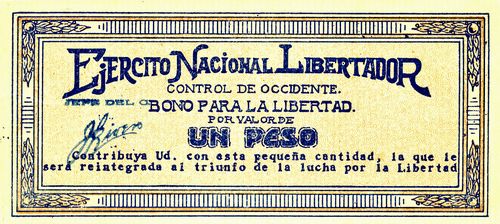
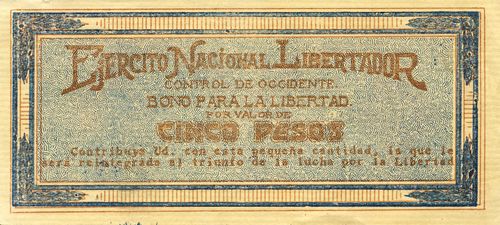
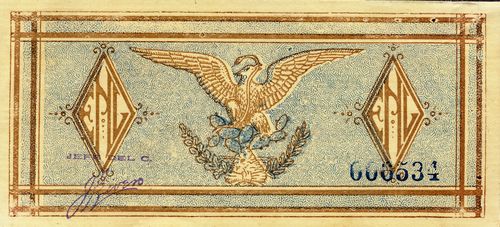
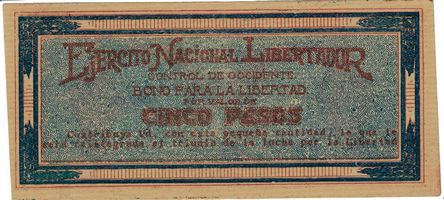
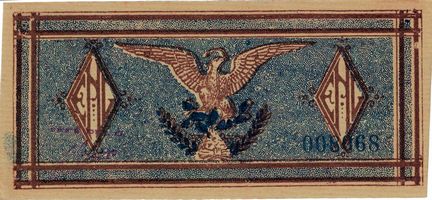
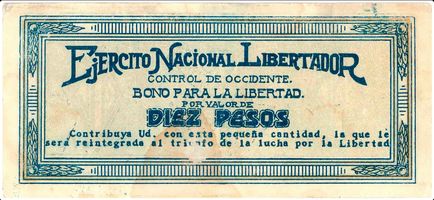
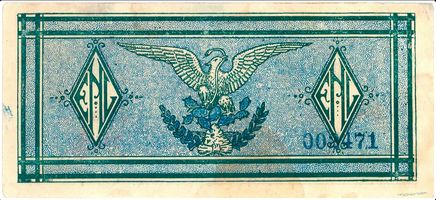
| from | to | total number |
total value |
||
| $1 | includes number 004646Delgado says this note was dark pink | ||||
| $5 | includes numbers 006526 to 008068 | ||||
| $10 | includes numbers 000813CNBanxico #11424 to 002471 |
The $1 bond has the facsimile signature of J. Rivero as Jefe of the Control de Occidente,
| J. Rivero | 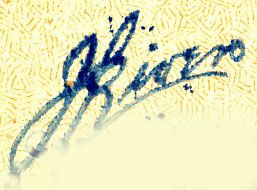 |
There were also receipts for contributions signed by Lauro Rocha.
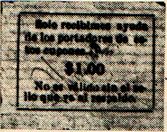
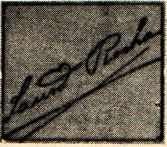
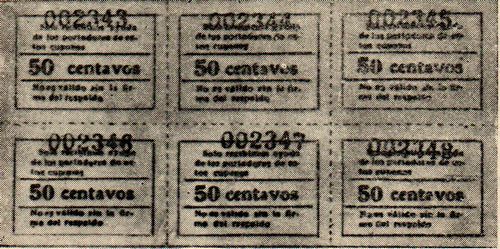
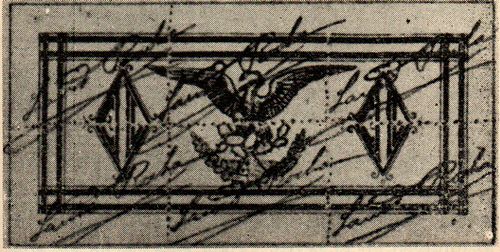
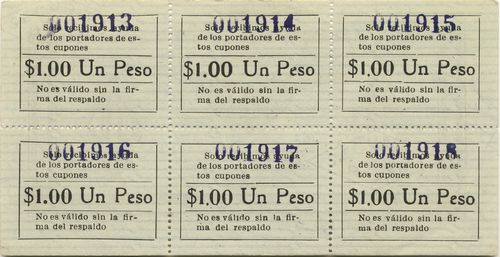
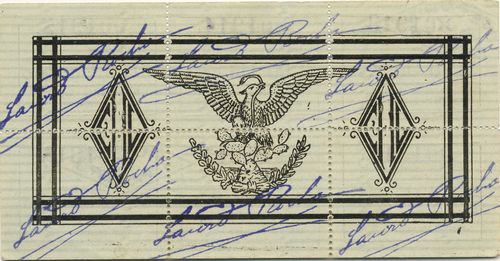
| from | to | total number |
total value |
||
| 50c | includes numbers 002343 to 002348 | ||||
| $1 | 000001 | includes numbers 001913 to 001918 | |||
| $5Delgado reports that he had heard of a $5 note |
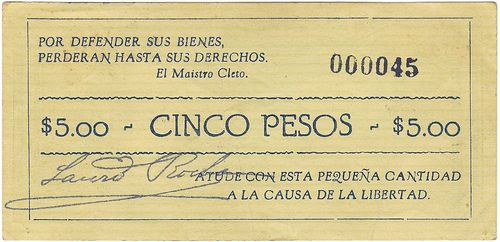
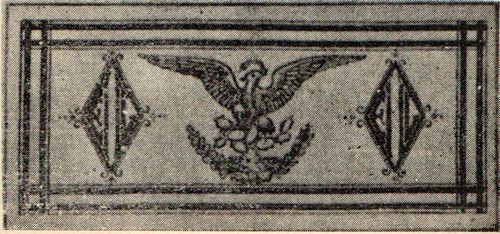
| from | to | total number |
total value |
||
| $5 | 000001 | includes numbers 000045 to 00082 |
|
When the Cristero Movement began in 1927, he took up arms. General Enrique Gorostieta Velarde held him in high esteem for his courage and discipline and promoted him to General. When Gorostieta was killed on 2 June 1929 Rocha took over the leadership. At the end of this armed conflict Rocha went to live in Mexico City to continue his professional studies in medicine. He worked to pay for his veterinary studies, since this career was cheaper, which is why he was in the Military College and later in the National Veterinary School. In 1934, during the Cardenista government, religious persecution intensified and Rocha renewed his armed opposition, publishing his first proclamation in Los Altos in Jalisco on 1 April 1935, He travelled around the country evading government surveillance and persecution, but when he went to Mexico City in the summer of 1936 he was denounced by an acquaintance and assassinated by government agents in Guadalupe Hidalgo (now Gustavo A. Madero) on 31 December 1936 . |
 |
Other Cristero issues are detailed in the Federal District and Nuevo León.

 Lauro Rocha was born in Atotonilco el Alto, Jalisco on 11 March 1908. He was a member of the Accion Social Católica of Jalisco, the Asociación Católica de la Juventud Mexicana and the Unión Popular Catequista, distributor of the Gladium newspaper and one of the defenders of the Shrine de Guadalupe, for which he was persecuted, imprisoned and his studies hindered by the state government.
Lauro Rocha was born in Atotonilco el Alto, Jalisco on 11 March 1908. He was a member of the Accion Social Católica of Jalisco, the Asociación Católica de la Juventud Mexicana and the Unión Popular Catequista, distributor of the Gladium newspaper and one of the defenders of the Shrine de Guadalupe, for which he was persecuted, imprisoned and his studies hindered by the state government.